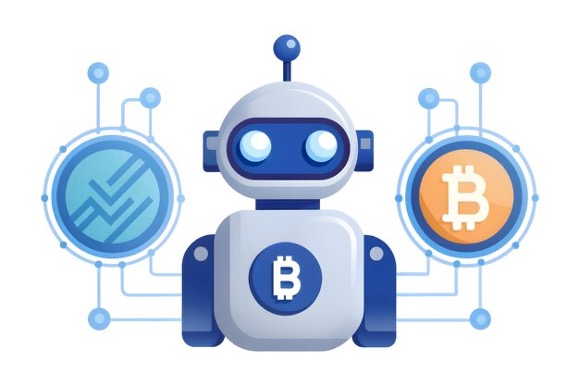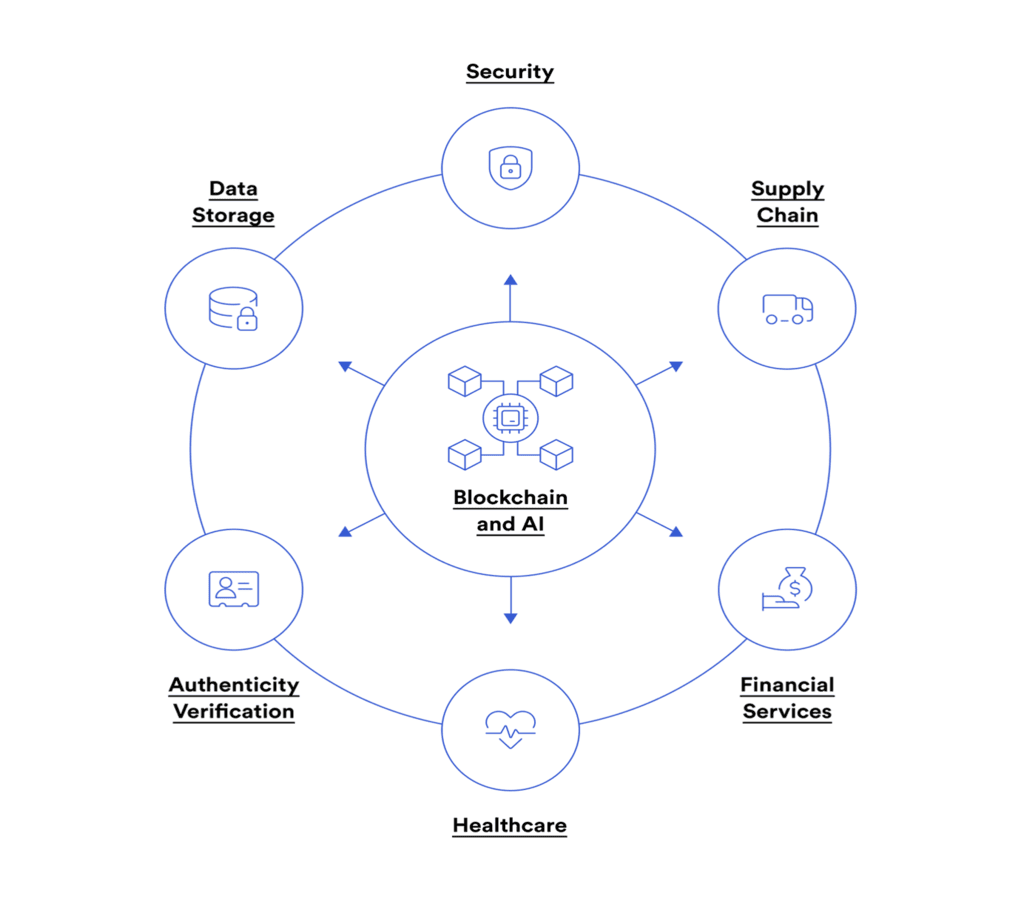AI-Driven Blockchain Analytics

Did you know that the global Blockchain market is expected to skyrocket to 39.7 billion by 2025? And get this—AI is projected to add a whopping 15.7 trillion to the global economy by 2030.
AI and Blockchain are powerhouse technologies and not just buzzwords; they’re revolutionizing the way we handle data and make decisions.
In this blog, we’re diving into the fascinating world of AI-driven Blockchain analytics. We’ll explore how AI can sift through the vast amounts of data stored on Blockchains, providing deeper insights and more accurate predictions. Buckle up, because this is going to be an exciting ride!
Understanding Blockchain Data
First things first, let’s break down what we mean by Blockchain data. Imagine a digital ledger that records transactions, smart contracts, and more, all in a decentralized, immutable, and transparent manner. Sounds pretty cool, right? But here’s the catch: analyzing this data is no walk in the park. The sheer volume and complexity can be overwhelming.
Types of Blockchain Data: Blockchain data can include transaction records, which detail the transfer of assets between parties, and smart contracts, which are self-executing contracts with the terms directly written into code. Additionally, metadata, such as timestamps and digital signatures, are also part of the Blockchain data.
Characteristics of Blockchain Data: The decentralized nature of Blockchain means that data is distributed across a network of nodes, making it resistant to tampering. The immutability of Blockchain ensures that once data is recorded, it cannot be altered, providing a reliable audit trail. Transparency allows all participants to view the data, fostering trust and accountability.
Challenges in Analyzing Blockchain Data: The decentralized and encrypted nature of Blockchain data poses significant challenges. The data is often vast and complex, requiring sophisticated tools and techniques to analyze effectively. Moreover, the need for real-time processing adds another layer of complexity.
The Role of AI in Data Analytics
So, what makes AI so special when it comes to data analytics? Well, AI, especially machine learning, is like having a super-smart assistant who can identify patterns and make predictions from massive datasets. It’s fast, it’s accurate, and it can handle data on a scale that would make any human analyst’s head spin.
Machine Learning and Predictive Analytics: Machine learning algorithms can be trained to recognize patterns in data, making them ideal for predictive analytics. These algorithms can analyze historical data to forecast future trends, identify anomalies, and make data-driven decisions.
Natural Language Processing (NLP): NLP allows AI to understand and interpret human language, making it possible to analyze unstructured data, such as text from smart contracts or transaction descriptions. This capability can uncover insights that would be missed by traditional data analysis methods.
Benefits of AI in Data Analytics:
AI can process vast amounts of data quickly and accurately, providing insights that would be impossible to obtain manually. It can identify hidden patterns, detect anomalies, and make predictions with a high degree of accuracy. This capability is crucial for Blockchain analytics, where the data is not just vast but also continuously growing.
AI-Driven Blockchain Analytics: Now, let’s get into the nitty-gritty of how AI and Blockchain can work together. By integrating AI with Blockchain, we can analyze data more effectively and efficiently.
Integration of AI and Blockchain: AI can be integrated with Blockchain in several ways. For instance, AI algorithms can be used to analyze transaction data to detect fraudulent activities. Machine learning models can be trained on historical Blockchain data to predict future trends and behaviors.
Techniques and Tools: Machine learning algorithms, such as neural networks and decision trees, are commonly used for Blockchain analytics. Tools like TensorFlow and PyTorch provide the necessary infrastructure to build and train these models. Additionally, specialized Blockchain analytics platforms, such as Chainalysis and Elliptic, leverage AI to provide insights into Blockchain data.
Case Studies: In the finance industry, AI-driven Blockchain analytics is used to detect and prevent fraud, saving millions of dollars annually. For example, banks use AI to analyze transaction patterns and identify suspicious activities in real-time. In the supply chain sector, AI is used to track the movement of goods and ensure the authenticity of products.
Applications and Benefits
- Enhanced Security and Fraud Detection: One of the most significant benefits of AI-driven Blockchain analytics is enhanced security. AI can analyze Blockchain data to detect anomalies, making it easier to spot and prevent fraud. This is a game-changer for industries like finance and healthcare, where data integrity is paramount. For instance, AI can identify unusual transaction patterns that may indicate fraudulent activities, allowing organizations to take proactive measures.
- Predictive Analytics: Another exciting application is predictive analytics. AI can analyze historical Blockchain data to predict future trends, helping businesses make informed decisions. For example, in supply chain management, AI can forecast demand and optimize inventory levels, reducing costs and improving efficiency. In the energy sector, AI can predict energy consumption patterns and optimize distribution, reducing waste and improving sustainability.
- Operational Efficiency: Speaking of efficiency, AI-driven analytics can optimize operations across various sectors. In the energy industry, for instance, AI can analyze Blockchain data to optimize energy distribution, reducing waste and improving sustainability. In healthcare, AI can analyze patient data stored on Blockchain to identify trends and improve treatment outcomes.
- Improved Transparency and Trust: AI-driven Blockchain analytics can enhance transparency and trust in various processes. For example, in the food industry, AI can track the journey of food products from farm to table, ensuring their authenticity and safety. This transparency can build trust among consumers and stakeholders.
Real-World Examples and Use Cases

Figure 1: Use cases of Blockchain & AI : image src https://blog.chain.link/blockchain-ai-use-cases/-
- Finance: In the finance sector, companies like JP Morgan are leveraging AI-driven Blockchain analytics to enhance security and streamline operations. Their AI models analyze transaction data to detect fraudulent activities in real-time, significantly reducing the risk of financial crimes.
- Supply Chain Management: Walmart uses Blockchain and AI to track the journey of food products from farm to table. This system ensures the authenticity and safety of food products, enhancing transparency and trust among consumers.
- Healthcare: In healthcare, companies like IBM Watson Health are using AI-driven Blockchain analytics to manage patient data. By analyzing this data, they can identify trends and improve treatment outcomes, ensuring better patient care.
- Energy: In the energy sector, companies like Grid+ are using AI to analyze Blockchain data and optimize energy distribution. This approach reduces waste and improves sustainability, contributing to a greener future.
AI-driven Blockchain analytics are not just a futuristic concept; it’s a reality that’s transforming industries today. From enhanced security to improved operational efficiency, the benefits are immense. As AI and Blockchain continue to evolve, their combined potential will unlock new insights and opportunities that we can only begin to imagine. Stay tuned, stay informed, and get ready to leverage these groundbreaking technologies in your own projects.

Joshane Kelsy | RIEPL
November 06, 2024

